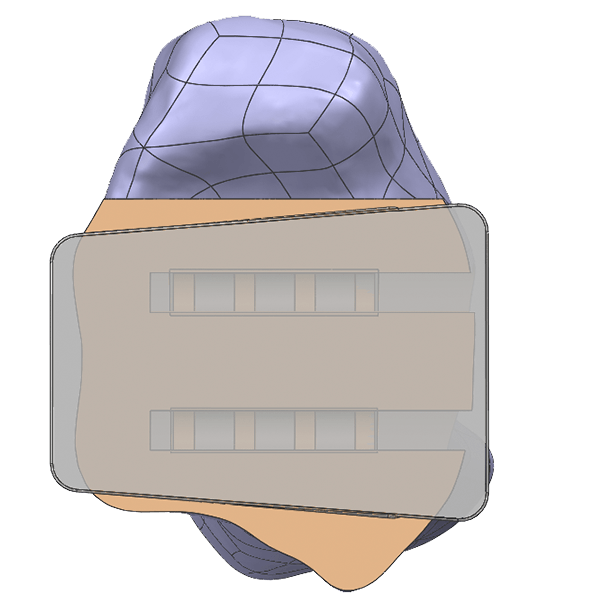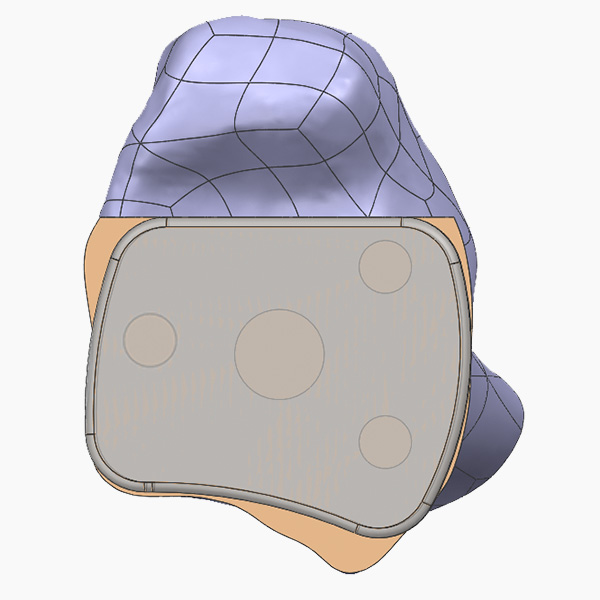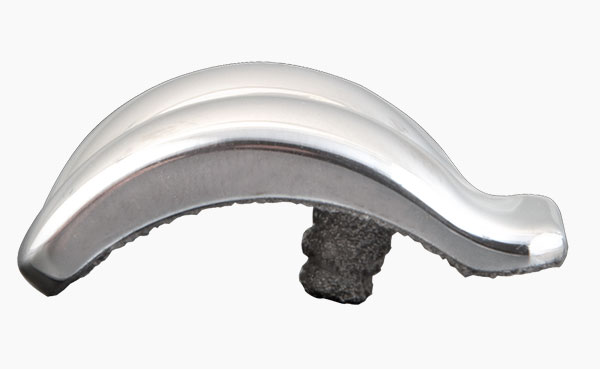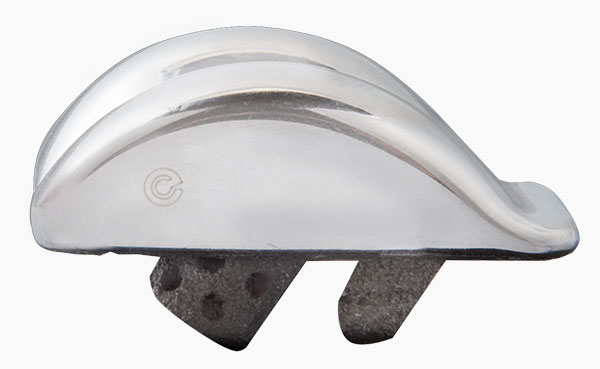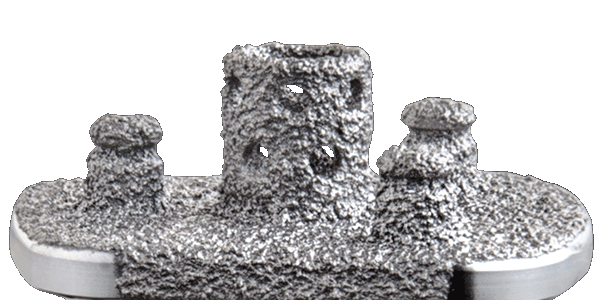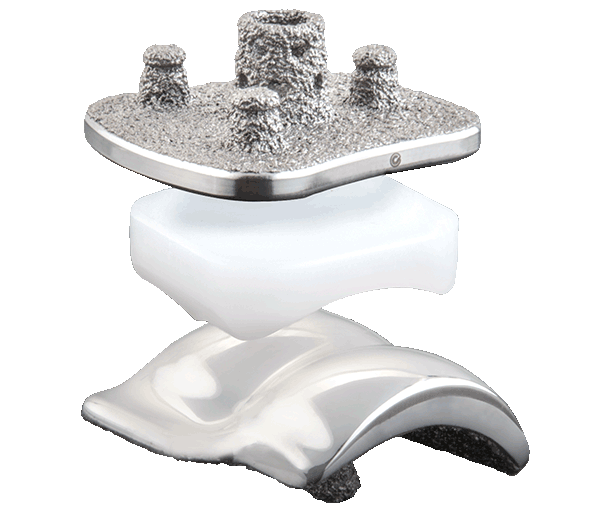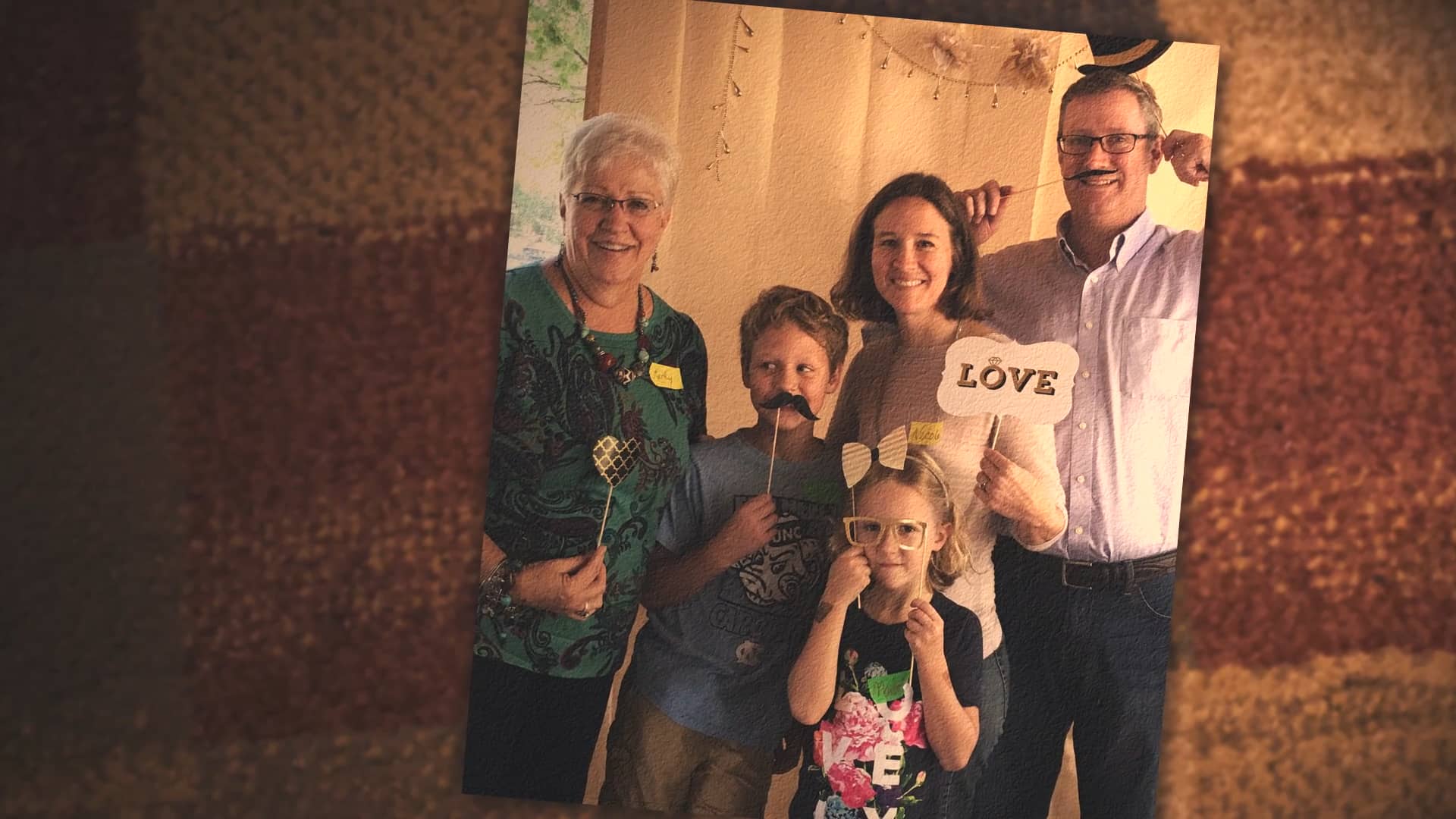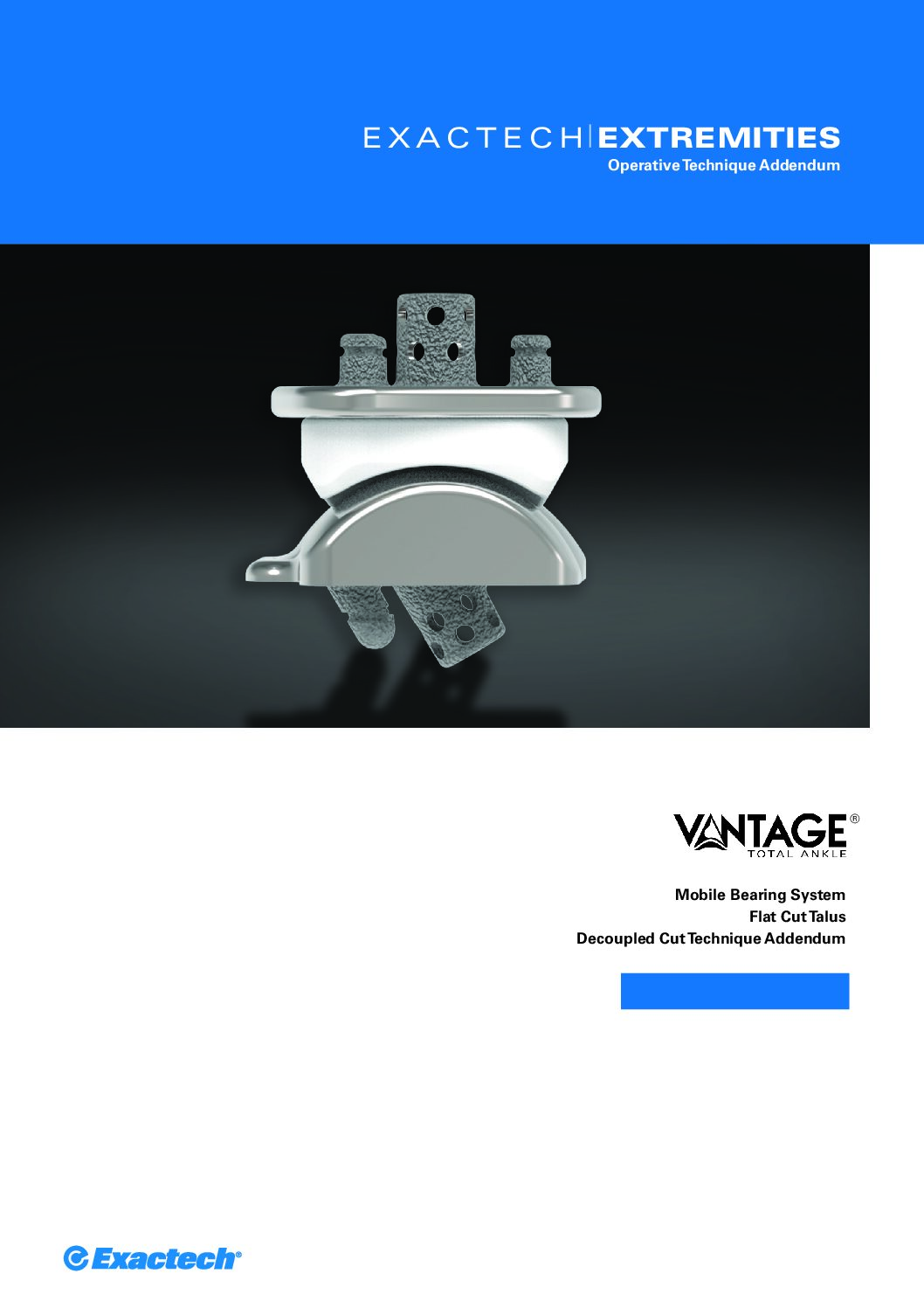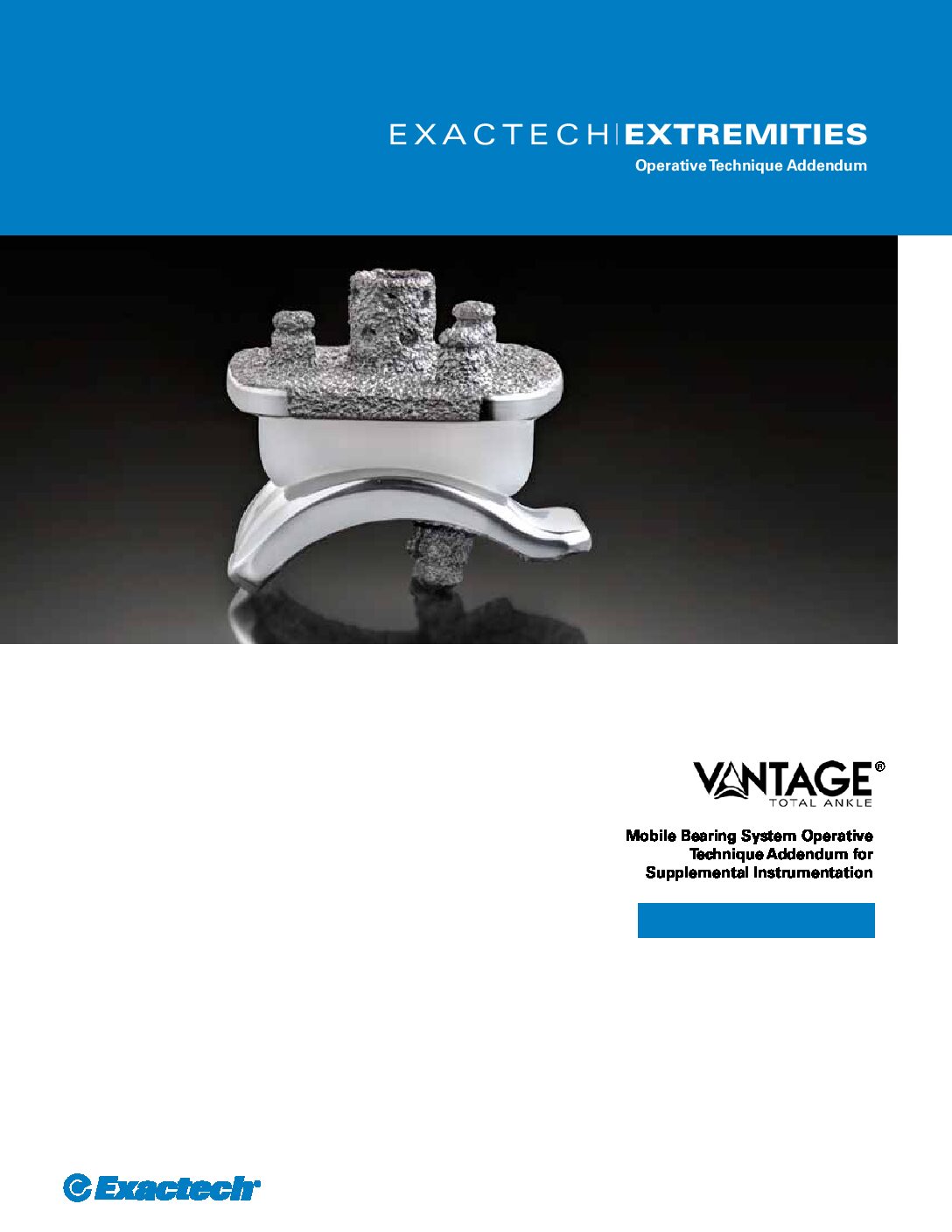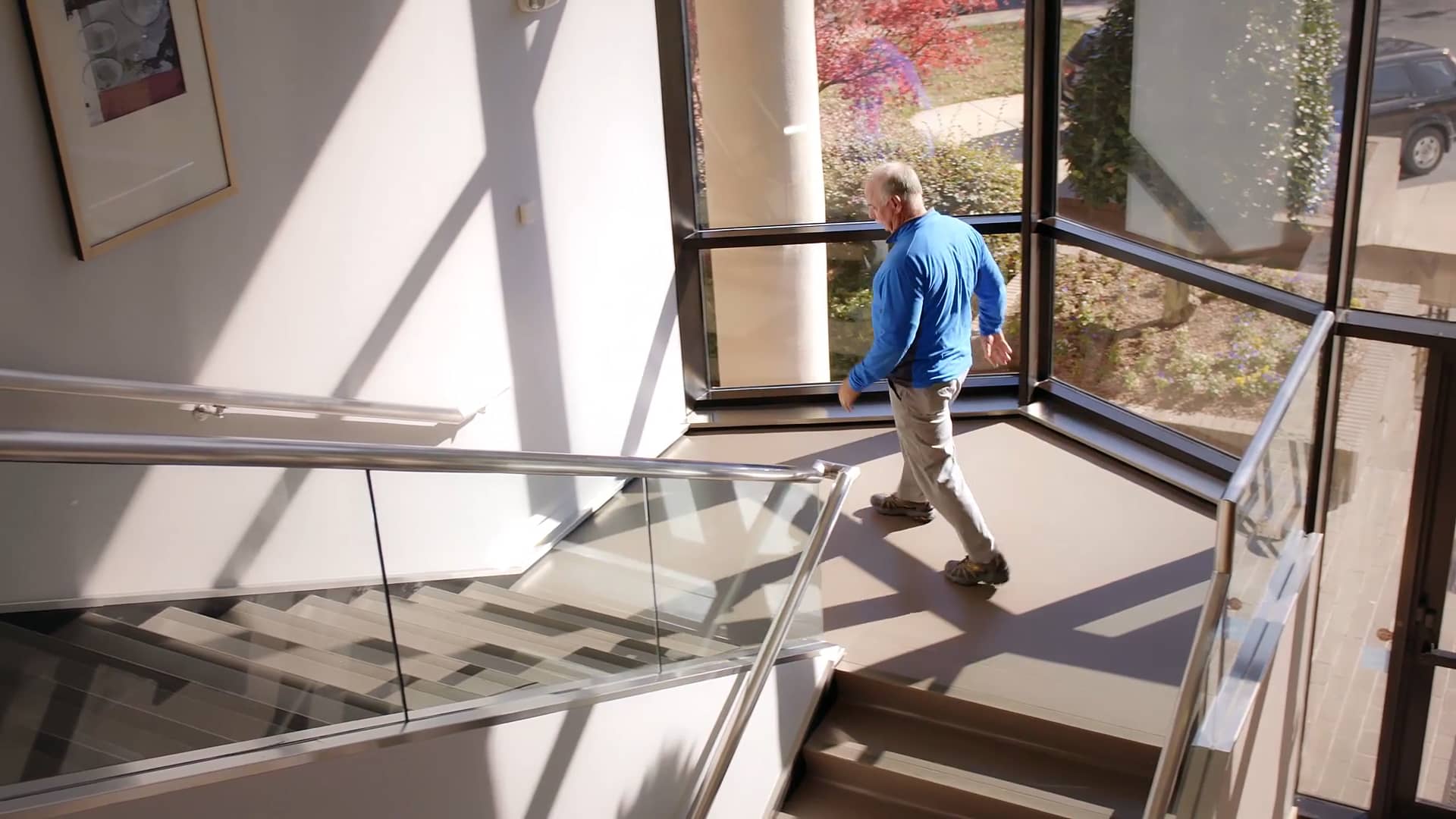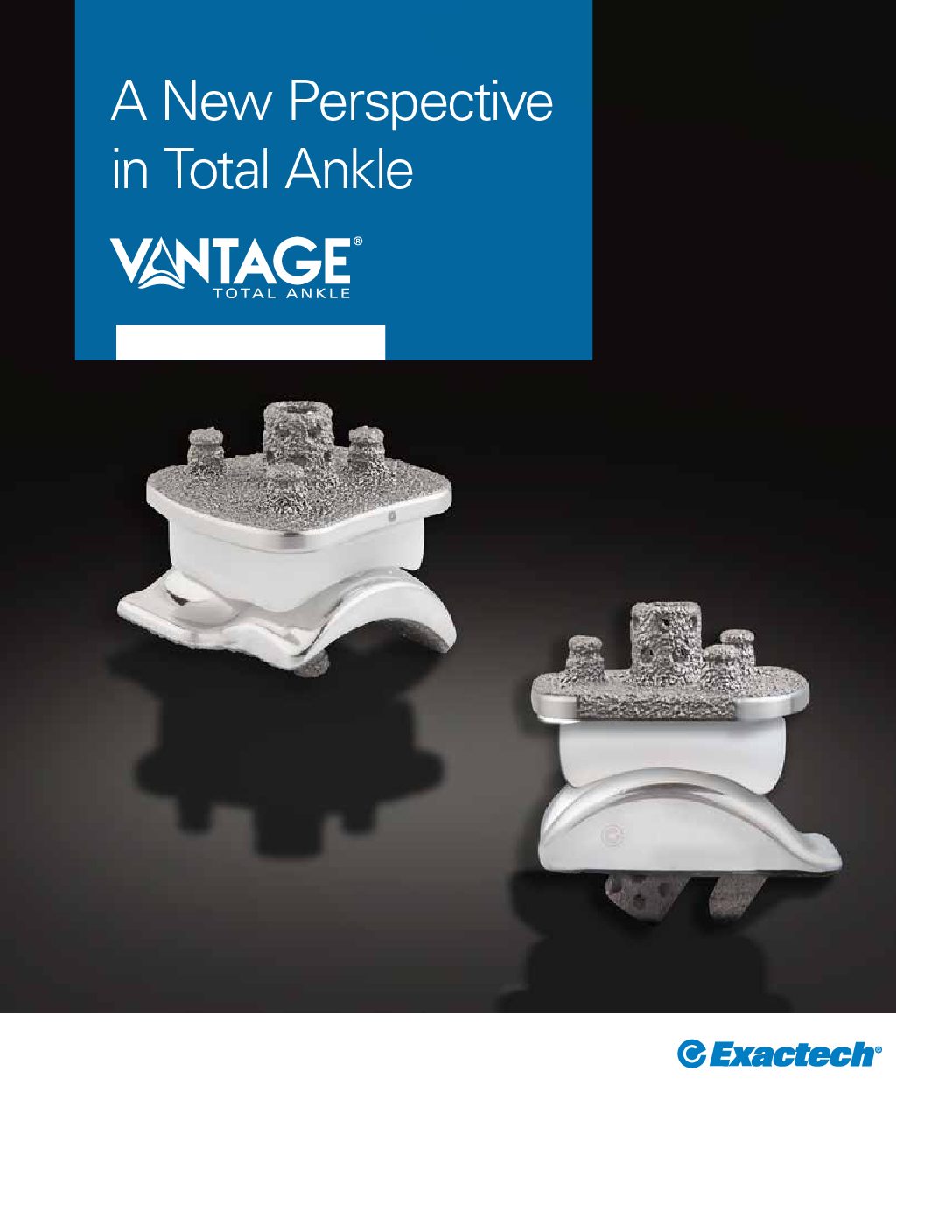Based on proprietary CT reconstruction data, the tibia and talar components were designed to mimic patients’ natural anatomy. The curved talar component was created to align with the trabecular bone structure of the talus and the tibia to provide anatomic cortical coverage and account for fibular articulation.1,2
Vantage ® Total Ankle System
A New Perspective in Total Ankle
Vantage ® Total Ankle System
A New Perspective in Total Ankle
Vantage® Total Ankle System
Through the collaboration and innovation of engineering and surgeon thought leader expertise, the Vantage Ankle achieves a new perspective in total ankle by addressing clinical challenges and patient outcomes.
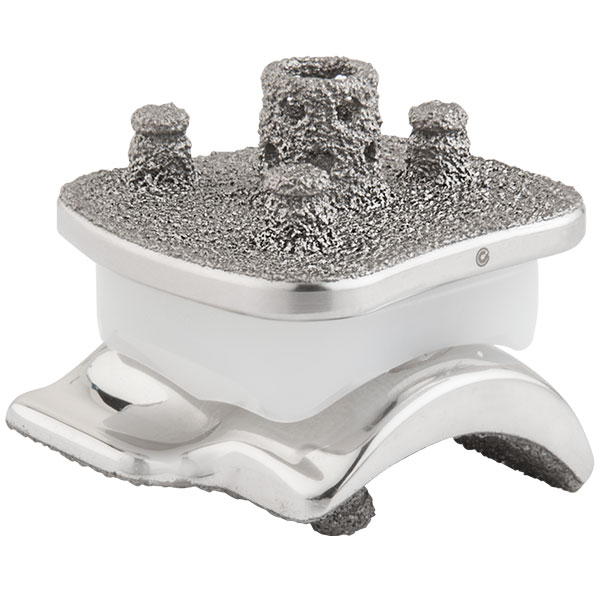
Anatomic Redefined
Biomechanic-Focused Design
A CT reconstruction study of the healthy talus led to the articular design of the talar component that allows for anatomic replication of the natural ankle biomechanics.2,6
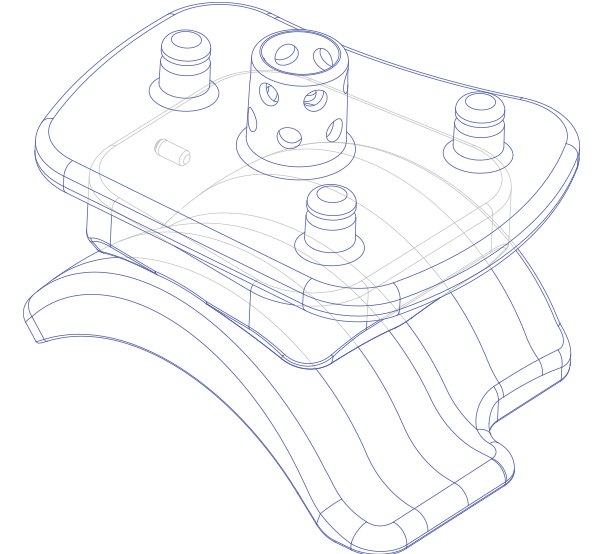
Reliability
The innovative tibial design and surgical technique are intended to preserve the integrity of the tibia anterior cortex while the anterior talar shield is designed to provide increased surface area that addresses subsidence.
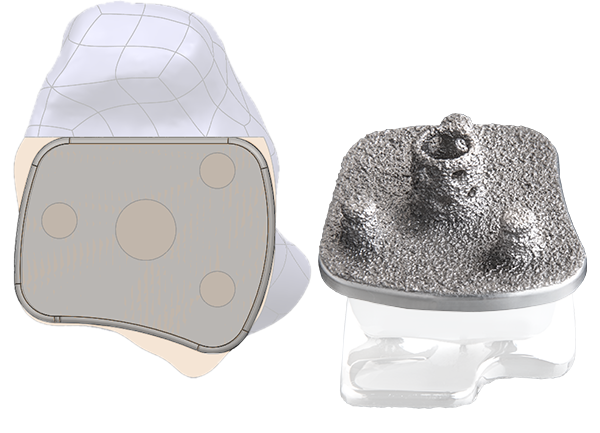
Vantage Total Ankle System Resources
- Valderrabano, V., Horisberger, M., Russell, I. et al. Etiology of ankle osteoarthritis. Clin Orthop Relat Res. 2009; 467: 1800. doi:10.1007/s11999-008-0543-6.
- Data on File at Exactech, Inc.
- Gougoulias NE, Khanna A, Maffulli N. History and evolution in total ankle arthroplasty. British Medical Bulletin. 2009;89:111-51. Epub 2008 Nov 13. doi: 10.1093/bmb/ldn039.
- Roche C, et al. Effect of varying screw configuration and bone density on reverse shoulder glenoid fixation following cyclic loading. Transactions of the 54th Annual Orthopaedic Research Society Meeting; 2008 Mar 2-5; San Francisco, CA.
- Siegler S, Toy J, Seale D, Pedowitz D. New observations on the morphology of the talar dome and its relationship to ankle kinematics. Clinical Biomechanics. 2014; 29:1-6.

